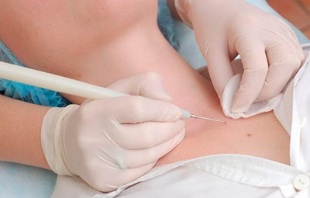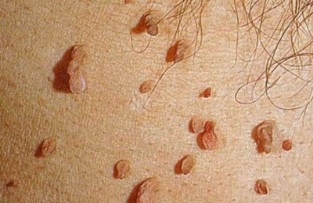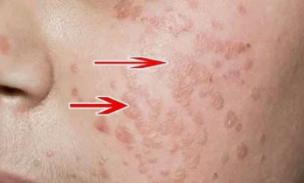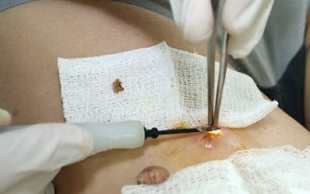
Human papillomavirus (HPV, HPV-human papillomavirus) or papillomavirus is a group of infections that include more than 100 viruses, 80 of which cause illnesspeople. According to statistics of the World Health Organization, 70% of the world population is carriers of the HPV virus. In most cases, the infection occurs after the onset of sexual activity and may be asymptomatic for a long time.
Causes of HPV infection
Symptoms of papillomavirus infection in women can be: various types of warts, flat and genital warts, cervical dysplasia. However, the most dangerous manifestation of the pathology is development of cervical cancer. There is also evidence linking the development of anal, genital, and vaginal cancers with infection with certain types of human papillomavirus (HPV types 16, 18, 45, 56).
Transmission Methods:
- Having sex.The main route of transmission of papillomavirus infections in humans. Using a condom during intercourse significantly reduces the risk of infection with the human papillomavirus, however, this is not a sure guarantee that an infection will not occur, as viral particles are very small. .
- Contact link - household.The cause of infection is the use of generic hygiene products: towels, soap, using public toilets, bathrooms.
- A natural childbirth.HPV can be passed to an infected child when the baby passes through the birth canal of an infected woman.
The source of this infection are the patient's skin and mucous cells. In this case, the person himself may not be aware that he has become a carrier, as the warts and papillomas can be microscopic and not visible on visual examination.
Prognostic factors for viral infection:
- became sexually active as a child;
- indiscriminate sex without using a condom;
- frequent abortions;
- presence of infectious diseases of the genital organs;
- long-term use of contraceptive;
- reduces the body's immune response;
- does not comply with the rules of personal hygiene;
- if you have HPV infection;
- exposed to frequent stressful situations;
- bad habit.
Through pores, cracks, small fissures of the skin and mucous membranes, the virus penetrates the basal layer of the epithelium, ensuring normal growth and renewal of the skin and mucous membranes. The DNA (deoxyribonucleic acid) of the basal cell carries information about the healthy structure of the cell. A viral particle, incorporated into the DNA, alters this information, resulting in the formation of affected cells, which during growth and division, cause symptoms of the disease.
Symptoms of human papillomavirus infection in women

One of the possible manifestations of human papillomavirus infection is genital warts and papillomas. They are specific shapes that resemble cauliflower, a bunch of grapes or a comb of a rooster, pinkish red or flesh-colored. Depending on the type and type of virus, they can infect a person's skin and mucous membranes.
Genital warts can form around or near the anus, especially if you have anal sex.
Papillomas can appear on the skin around fingers and toes, hands, around the eyes, armpits, and scalp. They also sometimes form on the soles of the feet and cause the typical painful feeling of walking.
This type of disease rarely degenerates into melanoma and cancer, however, to prevent the development of the disease, the formations are surgically removed.
Consequences of an HPV infection
Human papillomavirus in women can lead to significant development of genital warts, papillomas, flat warts, discomfort, pain, and when they are injured they can bleed with degreeserious difference.
The eighteenth and sixteenth types of HPV are the most dangerous, as they lead to the development of cancer. Cervical cancer, which is associated with infection with the human papillomavirus virus, ranks second among various malignancies in women. The death rate due to it is up to fifty percent.
Flat warts

This disease is characterized by the formation of flat patches that do not practically exceed the level of the skin.
Usually, the mucous membranes of the vagina and cervix are affected.
The cosmetic defect is much smaller for them than genital warts.
This is a disease with a higher risk of degeneration into cancer.
Disorders of mucous membranes of the cervix
Pathology is the normal structural change of the cells in the mucous membranes of the cervix, called dysplasia. This condition in gynecology is considered precancerous and requires active monitoring and treatment.
The disease in most cases has no symptoms and is detected by regular examination by a gynecologist. Dysplasia of some severity can be distinguished: mild, moderate, severe. The choice of treatment method depends on the severity.
Cervical cancer
This is the most dangerous manifestation of the disease. Cervical cancer ranks second among tumors in women and is associated with HPV infection types 16, 18.
The disease can progress without clinical signs or manifest with nonspecific symptoms: weakness, extreme fatigue, weight loss, spotting blood from the vagina outside of menstruation.
Methods of treatment of disease
If there are signs of HPV infection, due to dangerous consequences, do not self-medicate.
In order to choose the optimal treatment method, you need to consult a gynecologist, after thorough examination and performing the necessary tests, the doctor will prescribe suitable therapy.
Until now, no medicine has been invented that can cure HPV permanently. The main goal of treatment is to reduce the concentration of the virus in the body to prevent further progression of the disease.
Main therapeutic areas:
- treatment of manifestations (warts, papillomas, dysplasia);
- antiviral therapy;
- the use of funds to increase immunity.
When there are papillomas, genital warts, warts, dysplastic areas, even small in size, they should be removed, since the presence of the tumor increases the concentration of viral particlesin the woman's body, contributes to the further progression of the pathology.
Surgical treatment
The methods for removing genital warts, papillomas, warts and dysplasia are as follows:
- surgery; cryotherapy
- ;
- diathermocoagulation coagulation; coagulation by laser
- ;
- radio wave therapy;
- chemical attack.

Surgical method, which involves removing ingrown hairs with a scalpel, is the cheapest treatment, however, after that, the cosmetic defect persists and the healing time is considerably long. tell. There is also a risk of secondary infection. Hence, this type of intervention is used in extreme cases.
During cryotherapy, liquid nitrogen is applied to the affected area, freezing into pathology. After a few days, the papilloma or papilloma disappears and a small wound forms under it, which heals in 10-14 days.
Diathermocoagulation is to apply high heat to affected skin areas. This procedure is quite painful and requires anesthesia. The downside of this method is the formation of rough scars instead of pathological formation.
During laser coagulation, the impact of the laser beam on the affected area results in drying of the tumors. A dry crust formed in its place, and after a while it disappears without scarring. This is the most gentle type of treatment, but the high cost is considered a disadvantage.
Radiation wave therapy involves exposing the affected area to radio frequency waves. When using this type of treatment, there is no risk of bleeding, no pronounced scar formation, but the downside is the high cost.
Chemical method to be used when small formation is present. A special medicine is applied to the affected area. After a few applications, a scab forms over the treated area and disappears after a few days.
Using drugs
Drug therapy for human papillomavirus infection involves the use of the following groups of drugs:
- antiviral drug; Immunostimulant
- .
To reduce the concentration of the virus in a woman's body and to prevent its further reproduction, an extended course of antiviral therapy is prescribed. The drug is used in the form of tablets and suppositories, and the dosage and duration of treatment should only be determined by the attending physician.
Immunostimulants are prescribed after analysis and detection of impaired immunity in order to increase the body's defenses, accelerate the appearance of immune cells and stimulate production. produce antibodies to fight the virus.
Treatment of HPV infection in pregnant women
The presence of a human papillomavirus infection in the female body does not affect the reproductive system and is not a contraindication to pregnancy. If the exacerbation of HPV occurs during pregnancy, therapy for the condition is not performed during this period, treatment is indicated after childbirth.
However, a woman must be monitored by a doctor during her pregnancy. With the development of severe discomfort, gentle treatments are prescribed. In extreme cases, when there is contraindication to vaginal delivery due to the progression of the HPV virus, a caesarean delivery is performed.
Eliminate HPV with folk remedies
At home, you can use folk remedies like herbal decoctions and fluids - to treat papillomas, ointments - to get rid of warts, papillomas and warts.
How to prepare decoctions and fluids to treat human papillomavirus infection:
- Horsetail grass, nettle, rose hip, dandelion root, chamois leaves mixed in equal amounts. At 3 st. l. Add 800 ml of water to the resulting mixture, boil for 10 minutes over low heat, then let steep for 3 hours. Apply 1 cup 3 times a day 30 minutes before meals.
- Oregano herb, exam grass, immortality, St. John's wort, birch bud, nettle, calendula, coltsfoot, burnet root, chrysanthemum, vines, tree leaves, celandine, linden, caraway, sage are mixed in equal quantities. Pour 2 tbsp into the thermos flask. l. After the mixture is obtained, pour 500 ml of boiling water, allow to infuse overnight. Drink 0. 5 cups 4 times a day.
- Valerian root, perilla herb, oregano, linden, psyllium, and mugwort mixed with equal amounts. Pour 1 tbsp into the thermos. l. The mixture is obtained, pour 0. 5 liters of boiling water and let infuse for 3-5 hours. Apply 250 ml 2 times a day.
To treat local expressions apply:
- Celery juice. The juice is made from fresh leaves or bought from a pharmacy. Before applying the product, you must steam on the acne-prone skin, the healed area near the pimple area should be applied lipolytic cream. Celandine must be carefully applied to the affected skin area. This procedure should be repeated every two days for a week until the formation of the pathology disappears.
- Garlic. Vegetables should be ground in a fine mill and mixed with skin cream until a paste is formed. Apply the resulting mixture over formed areas for 2-3 hours daily for a month. After the procedure, wash the skin with soapy water.
- Young walnuts. They must be ground by a meat grinder, pour the resulting mixture into a 0. 5 liter glass jar so that it is 2/3 full, and pour kerosene into the rest of the jar. Let it soak for 20 days, then filter through cheesecloth. Infusion to treat infected skin areas 2 times a day.
After treatment and from the external manifestations of the HPV virus, women need to go to the gynecological examination every six months to monitor and prevent further progression of the disease.














































































